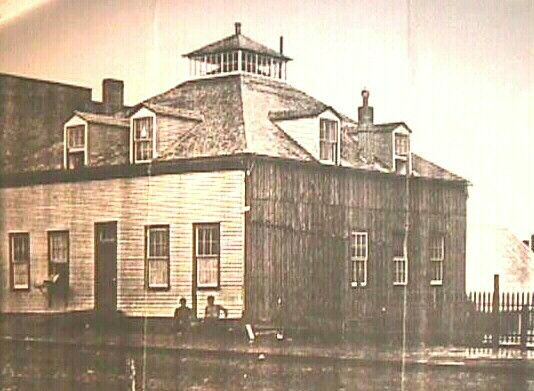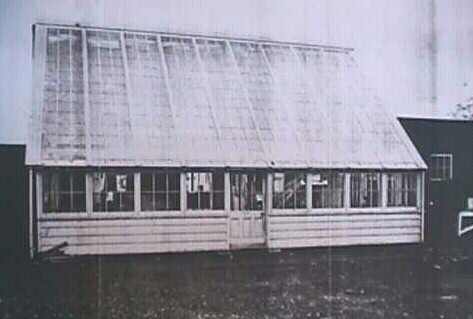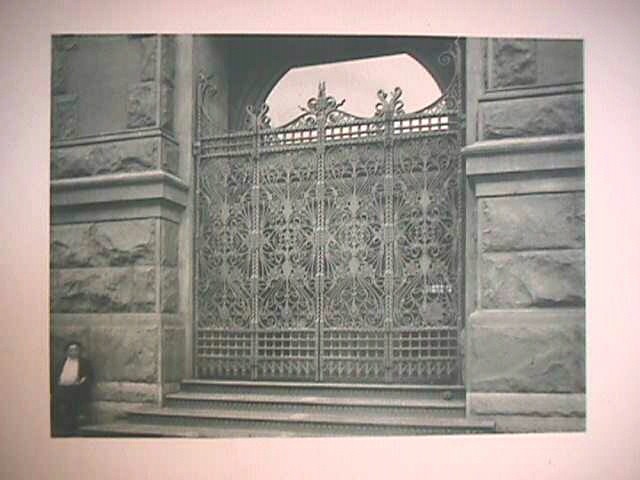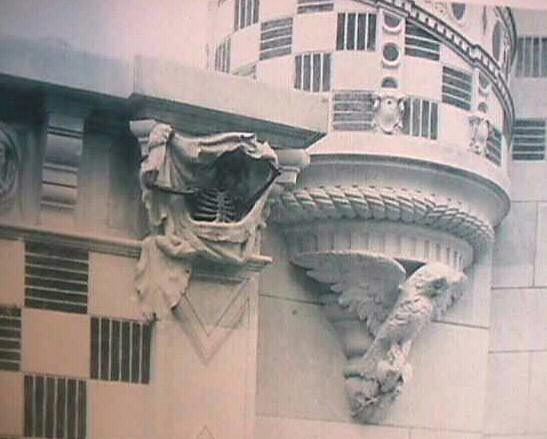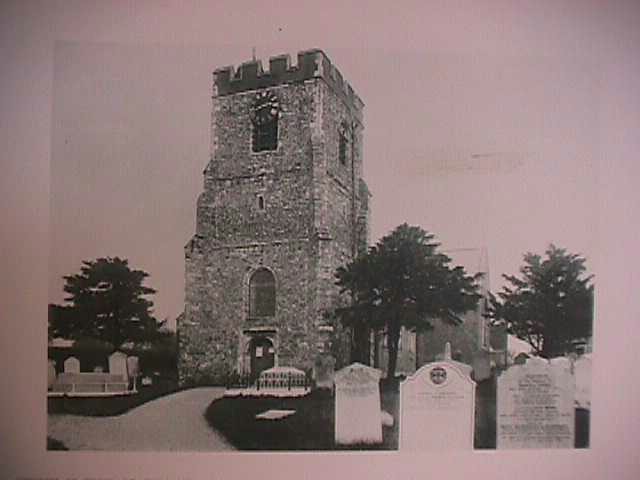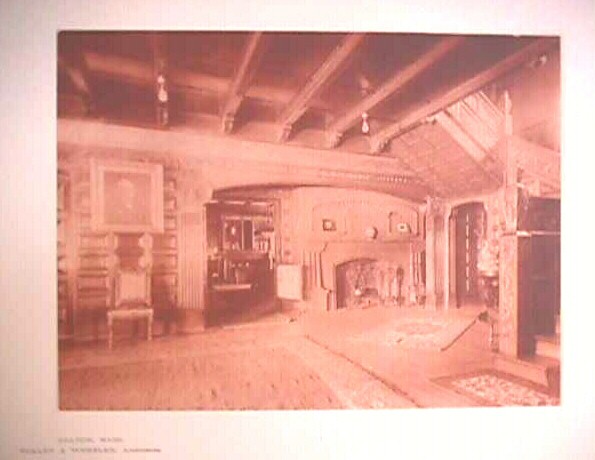C.D. ARNOLD - PHOTOGRAPHIC BEGINNINGS
BY
THOMAS
YANUL
copyright
2001
As
has been said several times before in this tome, the data to make comments
about Arnold's work and life is scant to say the least. His work as
a photographer is generally known by what is extant. The Columbian and
Pan-American Expos, the Cotton States Expo (to be discussed later) and books
and publications dealing with his trip(s) to England and France. Others include
publication(s) on Niagara Falls, some postcards, and his beautiful but scarce
1888 publication of 20 plates that include architectural views in America.
Also, a handful of photos of family, some views of NewYork city and
a series of large prints of Greek monasteries, presumably made during
his 1896-97 trip to the Mediterranian.
The
only mention of Arnold actually becoming a photographer is from the text
of his obituary in 1927. This information was supplied by his sister-in-law
Mrs. A.K. Davis, a lifelong resident of Buffalo and very close family member
to the Arnolds. There is no reason to not believe the information she supplied.
She probably knew as much about C.D. Arnold as his wife did.
In
the Buffalo Courier Newspaper obituary, May 9,1927, it mentions that "about
half a century ago he conceived the idea of touring Europe to photograph
various styles of architecture". The term "about" gives us the
leeway needed here since its believed Arnold probably became a photographer
about 1880-81. In 1882 he is not listed in the Buffalo city directory nor
any that can be found. Its quite possible that this was the time he first
ventured to Europe, but there is no way to know for certain unless new evidence
surfaces. But it stands to reason that between the time he was "given
a camera by a fellow travelling salesman" that he would have had
to take some time to learn the trade.
With
the introduction of dry plate film in the late 1870's there was a large increase
in the numbers of people becoming both amateur and professional photographers
(including George Eastman). The science and chemistry of it all had been
markedly changed for the better. Britain had been a leader in the
development of the dry plate industry, so Arnold's trips to England and France
may have taken advantage of this fact and purchased his plates overseas where
a ready supply was available. Unfortunately we don't really know.
Despite
the fact that Arnold may have been working as a photographer in the early
1880's, evidence to that effect does not become definite until his listing
in the1886-87 New York City Directory. Entry to that publication meant he
would have to supply information for it in advance, most likely in the Spring
of 1886. And in the fall of 1887 Arnold won the Silver Medal for
architectural photography(the highest award given in that category) at the
Annual Convention of the Photographers Association of America held in Chicago.
Arnold was a non-member exhibitor. The association changed their rules
not too long afterward allowing only members to exhibit for awards.
Its
obvious Arnold was not what you would call a "joiner". There is no
record of his having become a member of any professional or amateur group
in his life, with the exception of the Postal Photographic Club - but more
about that later.
NOTE: In March of 2003 I purchased a cache of original
vintage Arnold architectural photographs bearing his New York City Business
imprint. Many are identified as to architect and city/location. Among them
are McKim, Mead & White; Peabody & Stearns; E.A. Sargent; Green &
Wicks; G.E. Harney Marling & Burdett; S.G. Slocum; Stevens
& Cobb; W.W. Lewis, and Lamb & Rich.
Scans of these photos will be
forthcoming.
A
sort of landmark comes for Arnold via the elegant 1888 self-published book
of 20 architectural views entitled "Studies in Architecture
- At Home And Abroad". A most curious and interesting fact
here is the printer - "The Photo-Gravure Company" of New York. These
plates were made by a company whose founder and president, Ernest Edwards,
was already a legend in the photographic and printing trades. Edwards
had excelled as a portrait photographer in London, 1860's. He was also the
inventor of the heliograph process, a seminal printing method for the
reproduction of photographs. Edwards was brought to Boston in 1872
as manager of the Heliotype Corp. of Mass.(part of James R. Osgood Co.) who
had bought the rights to his invention. Edwards left Heliotype Co. in 1885
and set up shop in New York City as the Photo-Gravure
Co.[NOTE:Osgood & Co. abruptly went bankrupt in May,1885,
which is probably why Edwards left
Boston.] Its primary work was high class printing, plate
making and lithography. Two years later Edwards introduces a monthly
subscription series titled "Sun & Shade" a large (11x14")
publication of fine art and photography in the form of very high quality
gelatin and gravure plates. And also noteworthy, Edwards locates his company
in the same office building(853 Broadway) as Edward L. Wilson, the publisher
of the Philadelphia Photographer magazine (and later Wilson's Photographics).
The two worked often in concert, Edwards making gravures of images to be
included in Wilson's magazine, and Wilson editorializing about Edwards' work
and company. There does not seem to have been an actual business connection
- ownership wise, between them, just mutually interested in each others work
and occasionally giving work to each other.
As
regards Arnold, the choice of Ernest Edwards is interesting. Edwards
was certainly not the cheapest, but was generally considered one of the finest
art printers around. The cost I'm sure was high. In several printing and
photo magazines from 1888 many references are made to the new process by
Edwards of making tinted plates-gravures and gelatin based.
Not
surprisingly, many of Arnold's plates are just that - tinted a rose or green,
and I suspect at a higher price. Arnold certainly had high-class goods in
mind when these were produced. It appears also that the plates were made
as individual pieces that could be sold, each bearing a title, notations
and the title of the book on each plate. It would seem the "book" might
have been a small run of bound plates. They are very difficult to find as
a book. The author's was found through a book search some 20 years ago and
I have never found another on the market.
One
of the plates in the book was most helpful in dating at least one time when
Arnold was in England. It is a view of the 14th century St. Margarets
Church, Edgware, Middlesex. Fortunately for me the view had a small
cemetery in the foreground and a name and uncertain date can be seen on a
fresh-looking stone.
I
wrote the pastor and received a reply identifying the gravestone as bearing
a date of June 3rd, 1885. So we know he was there after that date. And that
time would coincide with a trip to Europe and returning with a cache of fine
architectural views to sell to architects, have prints for his exhibit in
Chicago in 1887, and for the inclusion in the 1888 publication. It
all fits very nicely. But of his other trips, earlier, there is nothing located
yet to indicate any time period. If in fact Arnold was having contact with
large architectural firms there is actually no direct evidence that those
connections led to his work at the Columbian Exposition. Its likely, but
not verified. Arnold's life as a photographer is without record for the period
in New York to his appearance in Chicago in March 1891. From that point on
Arnold's career is well documented as construction photographer under Daniel
Burnham, Chief of Construction. This aspect of Arnold's work will be
discussed next.
[Since
this was written evidence of Arnold's New York City work has surfaced
and
is discussed in other pages]
NOTES
ON ERNEST EDWARDS: When Edwards arrived in New York in 1885 the company
was organized with Edwards as president. Obviously others were involved
as financial backers/owners but the exact business arrangement is not known.
The operation consisted of offices at 853 Broadway (Domestic Sewing Machine
bldg.) and a printing plant in Brooklyn. In the Nov. 5,1886 issue of the
Photographic Times & American Photographer it was reported, "We recently
visited the works of the Photo-Gravure Co. in Brooklyn at the invitation
of the President Ernest Edwards.
Part
of the building was a private dwelling , other parts formed the winter quarters
for a circus-a place now a court between the buildings." These buildings
originally belonged to the American Photo-Lithographic Co.and were now the
photographic, platemaking and printing operations for the Photo-Gravure co.
They were located at Third Ave. & Tenth St., Brooklyn.(or 3rd Av. &
10th St.) The company was originally formed to do high grade printing,
lithography, gelatin and gravure plate making.
A
little over two years later the company introduced a superbly printed monthly
called "Sun & Shade - A Photographic Record of Events.Published monthly
with an Art Supplement in Photo-Gravure".
The
first issue was scheduled to appear in mid-summer but production delays slowed
the initial issue to be distributed in September. Arnold's work was carried
in both the first issue, Edgeware church, (where gravestone date
was found) and third (Nov 1888), Tower of Catherine de Medici, Blois,
France. Which again reinforces the fact that Arnold was obviously acquainted
with the company and/or Edwards himself, prior to its first issue being released.
To be included in the first issue of what was meant to be a very high class
periodical was, I think, significant in that Arnold may not have been as
obscure a photographer as some individuals stated later at the Columbian
Exposition. At least within the community of New York some photo professionals
must have felt his work was of a high enough artistic standard to have been
published in this widely publicized magazine.
NOTE:
Special thanks to Helena E. Wright, Curator, Division Graphic Arts National
Museum of American History, Smithsonian Institution, who for many years has
been most helpful in supplying information on the history of printing and
the work of Ernest Edwards.
TO
SEE NEXT
PAGE:
COL.EXPO-PREFACE
